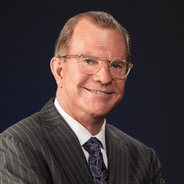8 minutes
Talk about how your agendas, risk and strategy discussions, and board development and diversity efforts can improve in the new year.
Here are a few simple board refresh ideas the participants in last September’s CUES Director Development Seminar found actionable.
Agendas
If you are not using a consent agenda to manage routine items in one fell swoop, please start. If you are already using a consent agenda, expand it. Consider adding these non-actionable reports and updates to your consent agenda: CEO report, progress updates on such topics as IT conversions, CRM training, adding Generation X members, growth of “wealth management” services, etc.
While only about half of the CUES seminar board participants were already using a consent agenda, those that were doing so appreciated how it reduced unnecessary conversations about non-actionable items and saved time for more dialogue on important issues.
More boards appear to be taking my advice to reduce oral reports and instead have “pre-reads” that can allow the board agenda discussion to open with dialogue rather than presentation. Having a board member digest a slide presentation saves time for important discussion during the live meeting. One of the biggest complaints of board members is not having enough time for discussion and dialogue on important issues. I have been on five boards of directors and, by the time I left each board, we abolished all oral reports to the board and gone completely to pre-reads. This approach to managing your agenda can apply to updates, big decisions, and any learning activity on governance or the financial services environment.
Strategic Discussions
“Our CEO is terrific with strategy, so the board doesn’t have to do much,” said a board member in one of my recent seminars on 21st century governance. Yes, most credit union CEOs are terrific; however, the second most significant role of the board (fiduciary oversight being first) is to be a “strategic partner” with the executive team in designing the future of the credit union.
To be a strategic partner, a board needs to examine trends and best practices more often than once a year at the planning retreat. Strategy is a year-round dialogue and many of the nation’s most successful and largest credit unions schedule two planning retreats a year.
Many of my CUES seminar participants had already changed their agendas to add “strategic dialogue” to each and every board meeting. This adjustment to the regular board meeting helps assure a “future facing” view at each meeting that provides a good balance to the “historical review” of performance required of our fiduciary responsibilities.
Try to carve out at least 50 percent of your agenda to track and update or discuss and refresh strategic initiatives of your credit union. Some of that time can be spent on such topics as recruiting the next generation of board member, disruptive innovations in banking, demographic implications of our field of membership vs. our community, the future of digital strategy, etc. All of these are future facing!
And, don’t overlook “metrics” you have assigned to strategic initiatives: Are we on schedule? On budget? What is the ROI on the newly initiated strategy? How are members reacting? Every strategic initiative deserves metrics and my seminar participants spent a lot of time discussing how they can make this work back home.
Risk Management Discussions
Risk management has become one of the top five governance issues nation-wide and, indeed, globally. Driven mostly by “cybersecurity” concerns, the “enterprise risk management” investment of boards is increasing rapidly.
Credit union board members at my CUES seminar all attested to the fact that they are paying more attention to cybersecurity and taking “asset and liabilities” review more seriously.
Most seminar participants were not literate with the broader scale of risk management topics that boards are now examining. Many boards are adding risk management to the audit committee’s charter and expecting to discuss risk, risk appetite and risk mitigation at least quarterly.
While participants at my seminar were generally unaware of the “enterprise risk management” developments in today’s governance model, they generally felt it was a topic their boards needed to look into back home.
Board Development
We still have directors joining CU boards who are limited in their governance knowledge. The good news is that more offerings on governance and the credit union environment are now available.
I'm consistently seeing board members who haven’t been to a governance seminar nor read anything on governance who are motivated to learn more and taking advantage of the courses available. Newer board members are seeking out these learning offerings early in their board tenure and this should be encouraged.
However, the follow-up learning discussion with our boards back home appears to be weak, according to the feedback from my latest seminar participants. Instead of a few minutes of “It was great,” “I learned a lot,” “We should be sending more board members,” follow-up should be a more complete report of governance topics covered, implications the board member sees for the board, and how the board might more consistently talk about governance and governance process.
High-performance boards expect a report from each board member who attended a session anywhere, regional or national. This can be in an “executive summary” format or a video and doesn’t need to be lengthy. The prevailing opinion of high-performance credit union boards is that if the member is paying for us to go to a learning event, the board should expect an actionable report back.
More and more boards are building into “board performance expectations” that a board member is expected to attend a credit union conference somewhere at least once in any given 18-month period. Add the back-home summary and you have enhanced board development in a manner members can respect.
Board Makeup
The composition of credit union boards is changing rapidly if attendees at my seminar were any indication. More professionals with business backgrounds, younger board members, and new directors targeted and actively recruited by the board appeared to be a trend.
The old model of any member who is interested in board service being an adequate addition to the board is giving way to more strategic discussion of exactly what mix we need in the boardroom to help set a viable future strategic course. More than half the participants in my seminar had focused discussions on who they wished to recruit for the board and had engaged in an extensive targeted search for the right member.
The old model of inviting any credit union member and hoping to find a competent candidate is giving way to a much more strategic approach to the vital mix of governance talent we need. Boards that are actively targeting their next member appear to have no problem finding them and getting them to run for election. These boards have also discovered a much more active role in promoting these new board members for election.
Surprisingly, about 20 attendees at my CUES seminar were credit union board members under the age of 35. While it may be challenging to find younger board members who have the time during the early part of their career and family development to serve on a board of directors, it appears they can be found. Peer board members continue to tell me how much they appreciate a fresh perspective on meetings, strategy, and credit union service from younger members.
Finding younger members willing to serve on your board will require a dedicated search … they are not standing around waiting for you to call. They will also challenge traditional assumptions about how boards should behave. For example, do we really need monthly face to face meetings? Possibly a few virtual meetings can suffice?
They will want to spend more time on strategy and will definitely tend to not be interested in operations or lengthy presentations to the board with little time for dialogue. They will also be instrumental in discussing how to make the credit union a desired option for a younger population. Look around any credit union gathering and it is easy to tell we are a senior group. While experience may be important, wisdom in not held only by older board members. I recommend you think about your board makeup as follows: a third under 35 years old; a third aged 35-55; and a third 55+.
Ten years ago “term limits on board service” was not a welcome discussion topic at CU seminars. Today, term limits are becoming commonplace and boards are finding the refresh of new board members an accelerating factor rather than a problem for governance. About half of the attendees at my seminar had already established term limits for board service ranging from two, three-year terms up to four, three-year terms. Where is your board on this developing trend in governance?
Finally, new board orientation is getting greater attention if the practices of my seminar participants are any indication. Formalizing the background reading a new board member is expected to digest before joining the board (strategic plan, a year of board minutes, committee minutes, annual report, regulator reviews and assessments) is becoming commonplace.
Many boards take a full day and host a new board member in the executive offices where they can have one on one briefings from the CEO, COO, CFO, chief marketing officer, and other key executives. A good practice is for the day to end with a discussion with the board chair on the new board member’s committee assignment and other important expectations. In today’s governance environment this one-day homework and one-day on site orientation is becoming common practice.
Tackle these ideas for an easy way to refresh your board and its governance practices in the new year. Wishing you a very good one!
Les Wallace, Ph.D., is president of Signature Resources Inc., author of Principles of 21st Century Governance and co-author of A Legacy of 21st Century Leadership. He is a frequent speaker and consultant on leadership and governance.






